Each December, I prepare a huge batch of summary reports for our trustees. This is good news for them, as we all tend to have nothing but free time and unassigned bandwidth that time of year. Or … maybe not? Nonetheless, we are data geeks, and this generally ends up among my favorite activities for us as an organization.
We look at data on all of the applications we receive, and how we have responded. We consider what we have been asked to do around the state, and how that compares to our expressed strategy. We analyze our investments, reviewing multiple years of data on which communities, demographic groups, and component strategies have received the most (and least) funding. We talk about our decision-making process, and how we can continue to hone our work together to be the best possible stewards of the resources we have been given.
This year, I thought our partners around the state might like to see how some of the numbers shake out. This isn’t everything we track, but it’s some of the bits we find most interesting.
To paraphrase Rich, we look at these numbers to help inform—but never to dictate or constrain—our future investment. We learn from them, while staying flexible and open to how we might best partner within Vermont’s philanthropic community in the months and years to come.
BY THE NUMBERS (2015-2019)
The Tarrant Foundation has been active in Vermont since 2005, investing more than $30 million since then in the charitable organizations, communities, and people of our state (Rich and Deb Tarrant have contributed more than $45 million in that time including their personal giving). The statistics below represent a snapshot of the foundation’s activity, encompassing data from 2015-2019.
Community Grants Program
The Community Grants Program is one piece of the Tarrant Foundation’s grantmaking portfolio. Each program within that portfolio has a distinct strategy, budget, and review process. The Community Grants Program is available exclusively to Vermont organizations, and accepts new submissions at any time. Information on this program’s guidelines, strategic priorities, application requirements, and review timeline is available here.
Total Dollars Requested[1]: $9,574,006
Average Dollars Requested per Year: $1,914,801
Biggest Year: $2,652,600 (2019)
Total Dollars Granted: $1,538,710
Average Dollars Granted per Year: $307,742
Biggest Year: $399,610 (2015)
Total Number of Requests Received[2]: 332
Total Number of Grants Made: 145
Total Site Visit Miles Driven[3]: 15,814
Biggest Year: 4,080 (2017)
Total Meals on the Road: 60
Favorite Road Meal: One in Every County
Biggest In-Car Road Meal Disaster: Also One in Every County
Counties where Percent of Dollars Awarded is Larger/Smaller than Percent of State Population:[4]
Larger than Population: Chittenden, Essex, Grand Isle, Orange, Washington, Windham
Smaller than Population: Addison, Bennington, Caledonia, Franklin, Lamoille, Orleans, Rutland, Windsor
[Note: Seven counties are within 2%; five other counties are within 5%. The greatest difference is in Washington County, where it is 7.6%.]
Demographics and Strategies
The Tarrant Foundation’s Community Grants Program focuses on the particular experiences of distinct demographic groups: Youth, Working-Age Adults, and Seniors (see the program’s Guidelines for more information). The following statistics look at requests and grants in each of those broad categories, and at clusters of articulated needs and strategies within them.
Percent of Total Dollars Requested/Granted per Demographic Group:
Requests: Working-Age Adults (45%); Youth (38%); Seniors (17%)
Grants: Working-Age Adults (42%); Youth (37%); Seniors (21%)
Primary Strategic Focus of Requests/Grants per Demographic Group (in Dollars)[5]:
Youth:
Requests: Out-of-School Time (60%); Employment Readiness & Training (16%)
Grants: Out-of-School Time (86%); Addiction Recovery (5%); Employment Readiness & Training (3%)
Working-Age Adults
Requests: Housing (33%); Employment Readiness & Training (23%); Addiction Recovery (15%)
Grants: Housing (45%); Employment Readiness & Training (22%); Addiction Recovery (15%)
Seniors
Requests: Congregate & Delivered Meals (31%); Activities & Enrichment (19%); Home Health (15%)
Grants: Congregate & Delivered Meals (41%); Activities & Enrichment (21%); Housing Solutions (17%)
Number of Grants Awarded for General Operating Expenses: 50%
Full Grantmaking Portfolio
In addition to the Community Grants Program, the Tarrant Foundation manages a series of other initiatives. Together, these programs comprise our full grantmaking portfolio. Each program is discreet, and the partnerships involved feature substantially different strategies, levels of investment, anticipated impact, and evaluation protocols. Currently, the foundation accepts unsolicited applications only in the Community Grants Program. The statistics below derive from our full portfolio, again between 2015-2019.
Total Dollars Granted: $8,964,943
Biggest Year: $2,206,042 (2016)
Total Grants Made: 291
Biggest Year: 69 (2015)
Number of Grantees: 131
Grantees that Received an Award in All Five Years: 7
Average Percent of Total Assets Granted Annually: 24.3%
Foundation Overhead as Percent of Total Expenses: 7.9%
Number of Grantees that are Vermont Organizations: 87%
Dollars Invested in Vermont Organizations: 97%
Looking Ahead
In 2020, we expect to grow both our total budget (5.4%) and our Community Grants program (35.7%). We look forward to learning more about important work taking place all around the state, to new partnerships, and to many more miles (and meals!) on the road.
If you have any questions about our grantmaking process, please let us know at (802) 857-0495 or info@tarrantfoundation.org.
Footnotes:
[1] Formal Letters of Interest only. Does not include capital campaigns, requests from out-of-state organizations, general appeals, or other solicitations.
[2] Ibid.
[3] Does not include miles within Chittenden County
[4] Applications are encouraged from all counties. Applications received are not in proportion to relative population.
[5] Only top 2-3 strategy types shown in each category.
Lauren A. Curry has served as Executive Director of the Richard E. and Deborah L. Tarrant Foundation since 2005.


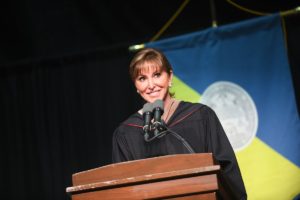
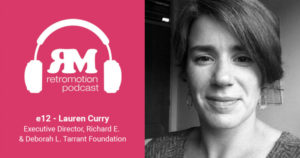
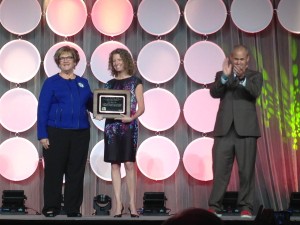

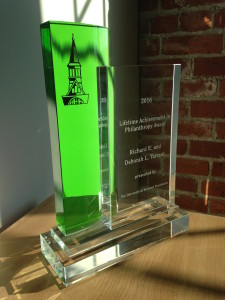
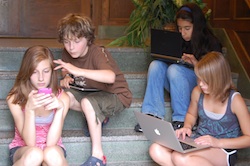
 @tarrantgiving
@tarrantgiving